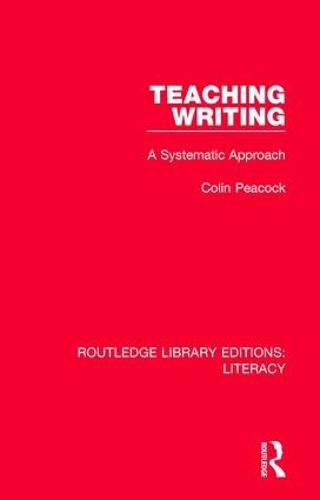Readings Newsletter
Become a Readings Member to make your shopping experience even easier.
Sign in or sign up for free!
You’re not far away from qualifying for FREE standard shipping within Australia
You’ve qualified for FREE standard shipping within Australia
The cart is loading…






Originally published in 1986. The traditional approach to teaching writing concentrates on mastering the different aspects of writing in the hope that these will eventually unite as a set of integrated skills. More ‘progressive’ teachers emphasise that writing is a total process which is ‘caught’ intuitively rather than explicitly taught. Both models are partially unsatisfactory, and consequently a third approach has evolved which seeks to combine the best of both. This book considers this ‘systematic’ approach, which seeks to retain the emphasis on writing as a total process but identifies within each communicative context the set of sub-skills involved. The author discusses and illustrates the strengths and weaknesses of this approach and the changes in professional thinking and practice that are essential to its successful adoption. He presents an overview of the nature of the writing process, to enable teachers to make clearer and more explicit statements about their objectives in setting classroom writing tasks.
$9.00 standard shipping within Australia
FREE standard shipping within Australia for orders over $100.00
Express & International shipping calculated at checkout
Originally published in 1986. The traditional approach to teaching writing concentrates on mastering the different aspects of writing in the hope that these will eventually unite as a set of integrated skills. More ‘progressive’ teachers emphasise that writing is a total process which is ‘caught’ intuitively rather than explicitly taught. Both models are partially unsatisfactory, and consequently a third approach has evolved which seeks to combine the best of both. This book considers this ‘systematic’ approach, which seeks to retain the emphasis on writing as a total process but identifies within each communicative context the set of sub-skills involved. The author discusses and illustrates the strengths and weaknesses of this approach and the changes in professional thinking and practice that are essential to its successful adoption. He presents an overview of the nature of the writing process, to enable teachers to make clearer and more explicit statements about their objectives in setting classroom writing tasks.